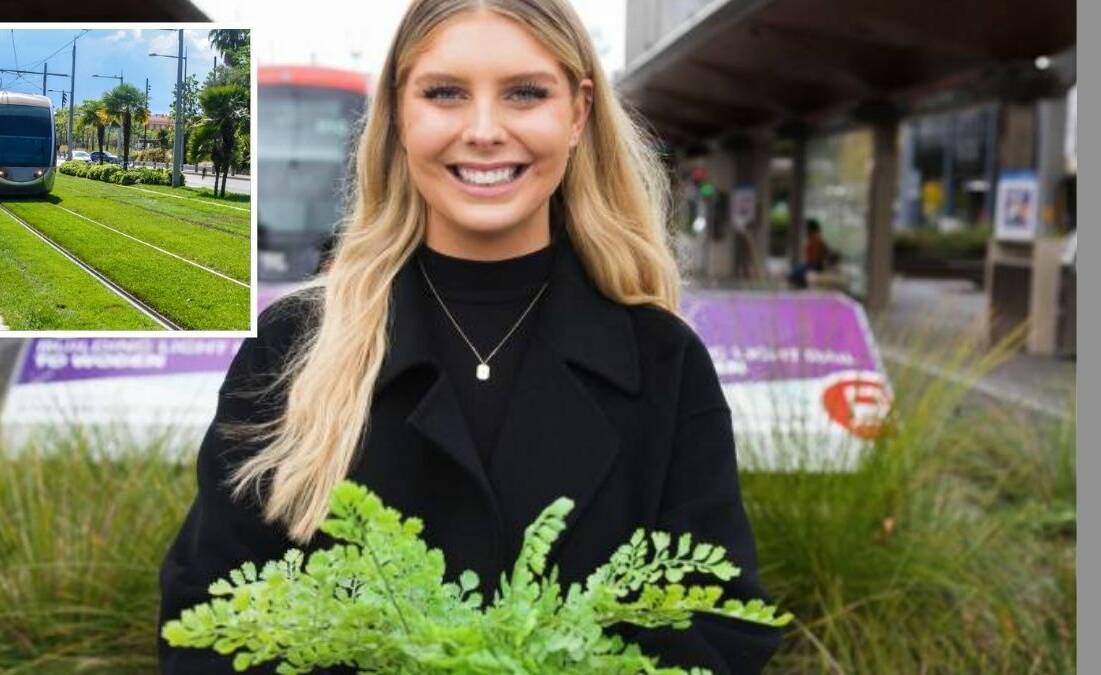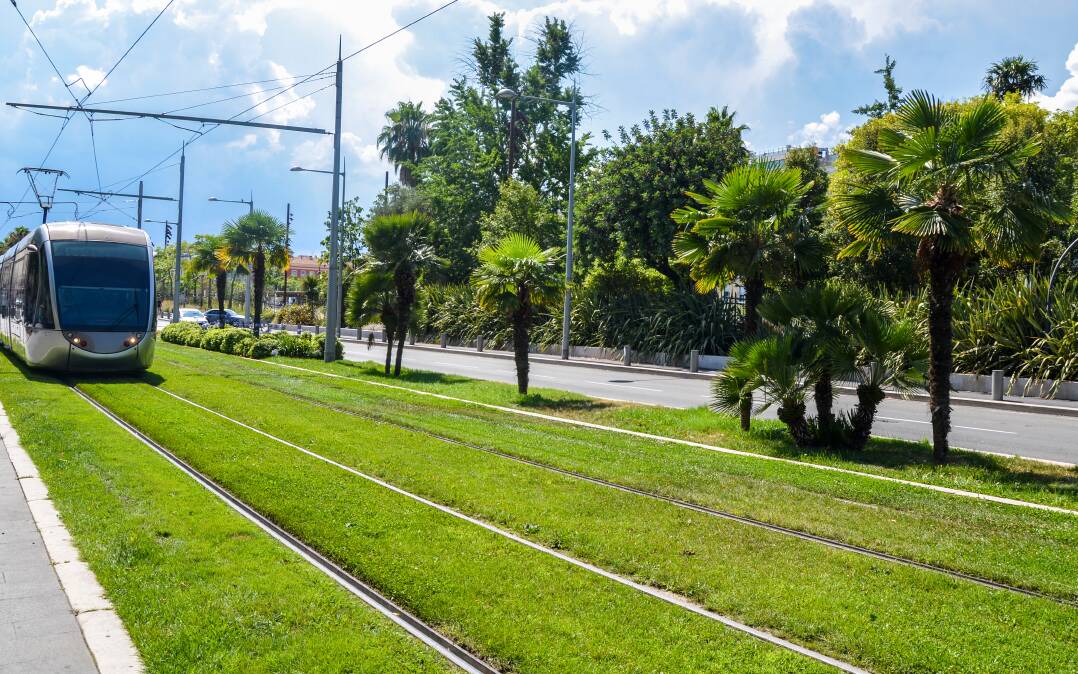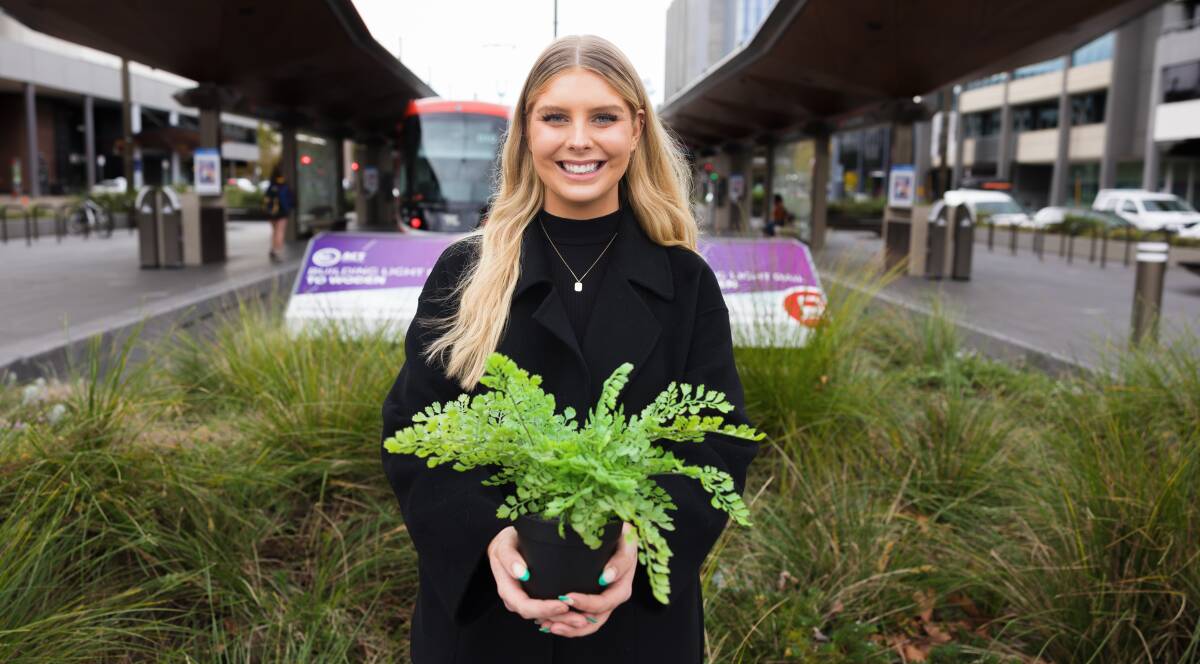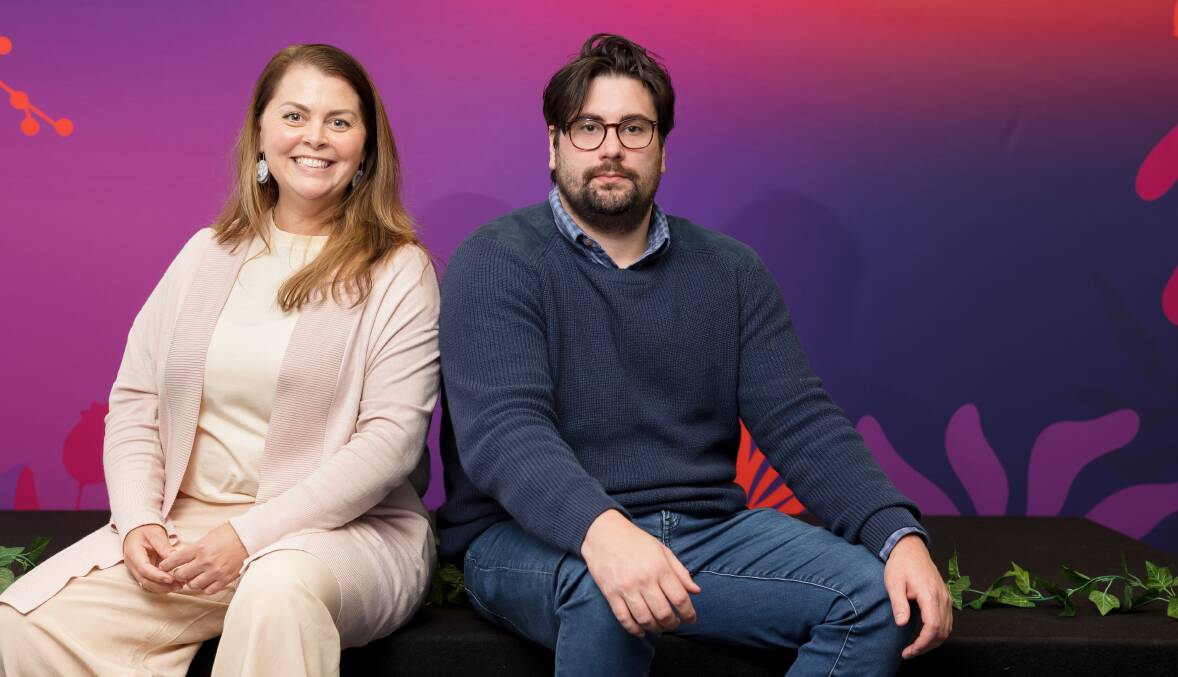
A pitch for plants on Canberra tramlines was given a green light from innovators this week, one of three winning ideas for transforming the capital.
A plan to plant native succulents and grasses along stage two and three of the tram route was awarded $5000 for its social and environmental benefits.
An idea for a Canberra co-housing model and an internet cafe for the homeless were also awarded first place and $5000 each, in an Canberra Innovation Network competition.
Australian National University graduate Kaitlin Hatherley said from Civic to Woden and then Belconnen to the airport, the tram line could be green.
"Anything that is concrete would instead be grass or succulents," she said.

"That would take the runoff of water, it would lower temperatures and help control noise pollution."
The concept, which has been adopted in several European cities, is reported to help maintain air and water quality, reduce pollutants, mitigate noise issues and promote positivity towards trams.
Miss Hatherley said she was one of the Canberrans who hated seeing the trees torn down on Northbourne Avenue and green tram lines would go someway to replace them.
"Seeing them in Europe was really the inspiration," she said. "I thought 'how is this not a thing here?'"
Minister for emissions reductions Shane Rattenbury said greening the stage two and three corridors was something he'd like to see.
"The project sounds really interesting and I'm keen to hear more about it," Mr Rattenbury said of the winning pitch on Wednesday.
The winners pitched their ideas to judges on Tuesday, three of 15 finalists selected from more than 50 innovators vying for a share in $15,000 in prizemoney.

Paul Jenkins, a volunteer at community housing site Blue Door, was awarded equal first place for his plan to open an internet cafe for the homeless.
Mr Jenkins said the facility at Ainslie already existed, with the funding to go towards new technology.
"We see the digital divide every day up at the Blue Door," he said.
"From accessing MyGov, online banking and job training, without access to the internet it is increasingly hard for participants to get ahead.
"Our idea was to bring back the internet cafe, because it's more powerful, less alienating, and has better choice architecture than a computer lab.
"Sometimes to go forward we must first go back to make sure we don't leave anyone behind."

Cris Clucas' concept for co-housing in Canberra was equal first place, designed from her experience of moving from the city centre to the suburbs.
She said moving out to far north Gungahlin felt really isolating, despite being jammed in so close to her neighbours she heard everything they were up to.
"I think there's a better way of planning housing in the ACT and I would love to see cohousing happening in the future," Ms Clucas said.
She said she'd use the $5000 to plan an event to get people enthused about cohousing.
"Cohousing has been around since the 1960s in Denmark and it's popular all around the world in North America and Europe," she said.
"The great thing about it is it's living in an intentional community where people have a say in how the community is run."
An idea to expand the Stromlo Dark Sky Precinct by adding a Space Museum and Mount Stromlo hotel was given a $2500 boost, part of a Drop an Idea Stream competition which didn't involve pitching.
The proposed conversion of organic waste into renewable energy, while producing organic fertiliser, and the implementation of a digital marketplace to buy and sell organic waste won $1500.
A plan to develop an augmented reality policy to steward Canberra's digital space won $500.







